Spent the day at the Web 2.0 Expo in San Francisco's Moscone Center, the hot bed of web 2.0 development. The web has been morphing at an hourly pace, yet the show evoked images of how slowly some things change. Here's the story.
The Drive to San Francisco
It's a straight shot up Highway 280 to San Francisco some 50 miles north of Silicon Valley. A sunny day typical of Northern California - not too hot or too cold. Avoiding the rush hour, the drive was fast, relaxing. Winding through the mountain scene on an 8-lane highway until one enters the unique landscape of Daly City in San Francisco - this was a pleasant change from the virtual worlds of social media and software development.
How Quickly the Web Changes
Last night, Twitter released a new version that highlights their entrance into 'search' and stretches beyond their core with social networks and 140-character messaging. Bugs were many, but corrected in real-time in less than 10 minutes. Facebook revamped their website - to weather the torrent of user complaints from millions. Microsoft is trying with new versions of Internet Explorer and Windows Mobile. Seemingly everyday, hundreds of significant developments testify to the pace of change in the virtual world.
Facebook and Twitter have changed quickly and stormed to center stage - dominating mindshare over companies such as Google and Yahoo; and pushing Microsoft and the newspaper publishers into dinosaur history. Tens of millions of people shift with each change online.
We released the tEarn Media series of 20 supersites in early March. Traffic has grown to 100,000 unique users in the FIRST month; and the pace in early April is already at the 180,000 rate. Each day sets new records.
Rather than user sign-ups, comments, and ratings that create friction for users - we cooperate with the open network at Twitter. In two weeks, over 16,000 people follow one of our virtual hosts. By the end of this post, we will have over 17,000 followers. That's a faster path to popularity than a self-promoted real-life celebrity on Twitter.
Everyday, thousands return to our supersites.
The change is fast. Daily. The adoption is fast. Shockingly hyper.
The #w2e
#w2e is the twitter hashtag convention for the Web 2.0 Expo. Our use of this hashtag illustrates the rate of change and adoption on the Internet and for users at the expo.
However...
At Moscone, here are my first flashes.
- Sony's Meteron, which is across the street, is closed - another casualty in battles with Apple and Nintendo.
- The show is sponsored by two respected publishers, Techweb and O'Reilly books. Despite covering technology, have they fallen behind the times?
- New magazines cover the topics of web hosting and video marketing. I perused the glossies, noted some of the usual advertisers. I would have returned the magazines to save trees, but the slightly soiled, over-printed magazines would be tossed anyway. Pretty. Sad. Why destroy the earth?
- The conference used a bank of laptops connected to printers for badges. I was greeted with a 'friendly' request for a confirmation code. What code?
- I found the option to log in by id. I remembered, but typed the wrong password since the system demanded a certain type of password. But the error message simply said I was not enrolled. I resolved my own problem. Nevertheless, the system was not web 2.0 and fails every measure of user interface design. The organizers produce beautiful magazines and books, but fail to match their editorial advice when it comes to online execution.
- For an advanced show where everyone carries a cell phone, a system where the guest sends a/an #imhere SMS to @w2e - would have been cool and expected.
Covering the Events
There are some 10 simultaneous conferences with seating for about 5,000; and estimated 2,000 listeners. Were they listening?
- The security topic had 12 people in a hall with some 800 seats.
- Everyone had an iPhone, Apple MacBook Air, netbook, RIM, or some other of the latest fashionable device. Oh! Don't forget the leather jackets. The wirelesss devices was the story.
- Twitter was the most popular topic, but as the speakers talked about twitter, I saw a range of uses from registering for twitter to tweeting the talk.
- Users snapped iPhone photos and uploaded to their web page. Some had their FrontPage app running.
- The most popular use was email or twitter checking, Google reader, taking notes in Word??, or monitoring web dashboards with complex panels. Perhaps the attendees were following the same talk over tweeter from other attendees!!
- In hindsight, the most common screen was the Wi-Fi panel as users struggled to get a connection. Maybe that's why so many were using Word or some notepad.
- The speakers droned on with buzzwords. Do they have 15,000 followers? Can they influence these followers to click their links? Techcrunch and Fred Wilson have admitted that they cannot convert followers to visitors. Have these speakers experienced a different result? Or is it just talk with no first-hand success?
So, who was listening? I don't know. You tell me.
Like the users on the web, people have become interactive - preferring to multi-task - rather than just listen to the speakers. They hear, but if they listened, they would have walked out like I did.
The Booths
A quick round of the an estimated 200 booths totaled 4 reps talking to 4 passer-byes. I would guess 2,000 people - or 5,000 for the expo this day.
Let's get back to the theme of how slowly some events change.
Booth workers practice their elevator pitch. Did they qualify the listener? I heard some San Francisco tourists glaze over a pitch on outsourced distribution. Keynote (I'm a small investor) hired a new worker to pitch their enterprise product at a consumer show. The German government sent a delegation to Silicon Valley. BTW, IBM's morning session drew 80 in a room with 400 seats. An IBM worker admitted that their schedule of shows for the year can draw zero serious customers. Why bother?
I suspect the main draw of the show was paid jobs, San Francisco, the parties, and free lunches - in that order.
Comparing Twitter to w2e
5,000 people a day meander through the booths and catch glimpses of brands, names, and buzzwords. How's that different from our 16,000 daily followers at Twitter?
Not much.
Both are unqualified traffic. The chances of anyone seeing your brand or message is a small statistical percentage. The close is equally difficult.
What's different is the productivity. Do compare spending $10,000 or more to return similar results with the labor costs to use Twitter.
For both, the ROI depends on the return and not just a smaller investment. Booth workers, like newspaper publishers, have not solved the problem of returns to cover high costs.
Web workers are solving the return problem in creative ways. The investment is less online. Thus, there is more time for online publishers to solve the problem.
When this article is published, I estimate that over 500 people will see and perhaps read this post. With a few diggs and retweets, perhaps 2 to 3 thousands will get a chuggle. What it generates in revenues is a big problem still. But the impact of the 500 pitches is higher than 5 days struggling at w2e or even being a speaker at the event.
Conclusion
Will trade shows follow newspapers? Probably not, some trade shows do very well.
Does online compete with trade shows? You bet.
Still, one can't ignore the irony that w3e represents the community that seeks change, but moves like dinosaurs. Please note that this piece intends no disrespect for the editorial quality of the w3e hosts.
And may the parties continue...
 But the cost of bandwidth, content licensing, ad-revenue shares, hardware storage, sales and marketing and other expenses will total about $711 million, putting YouTube squarely in the red, the Credit Suisse report estimated. Bandwidth accounts for about 51% of expenses -- with a run rate of $1 million per day -- with content licensing accounting for 36%.
But the cost of bandwidth, content licensing, ad-revenue shares, hardware storage, sales and marketing and other expenses will total about $711 million, putting YouTube squarely in the red, the Credit Suisse report estimated. Bandwidth accounts for about 51% of expenses -- with a run rate of $1 million per day -- with content licensing accounting for 36%.


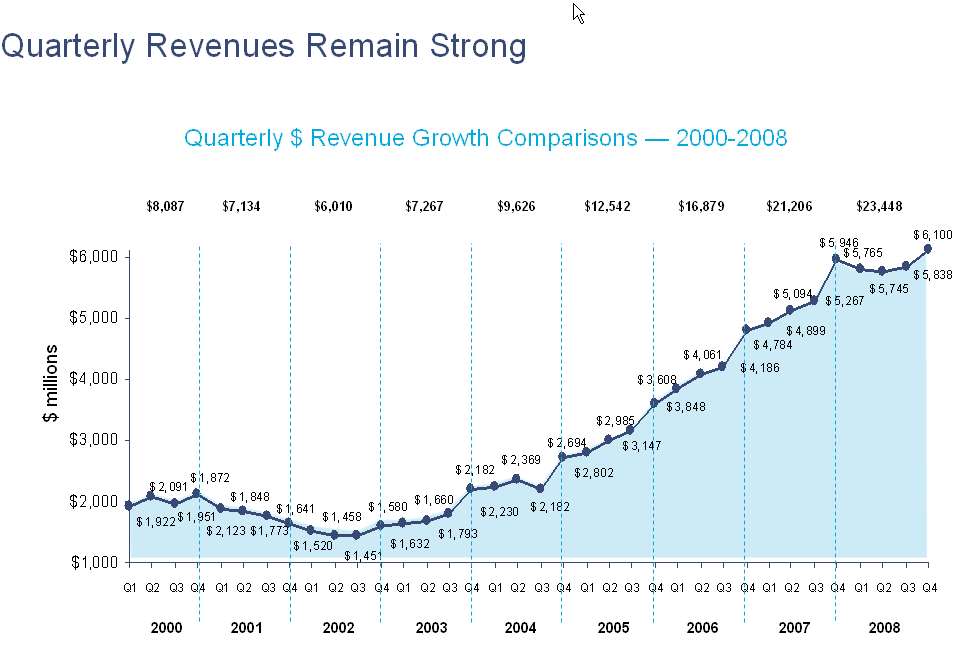
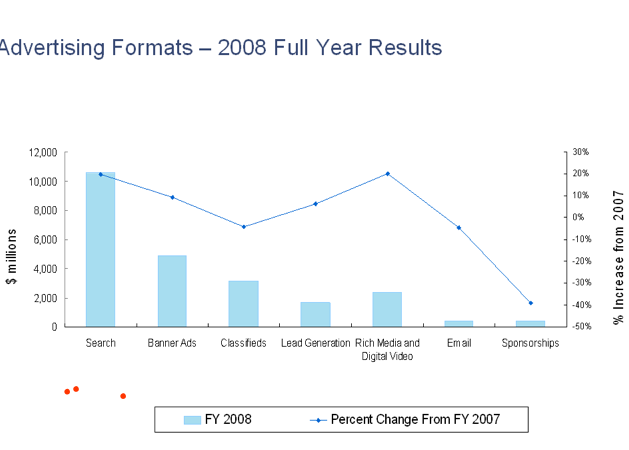
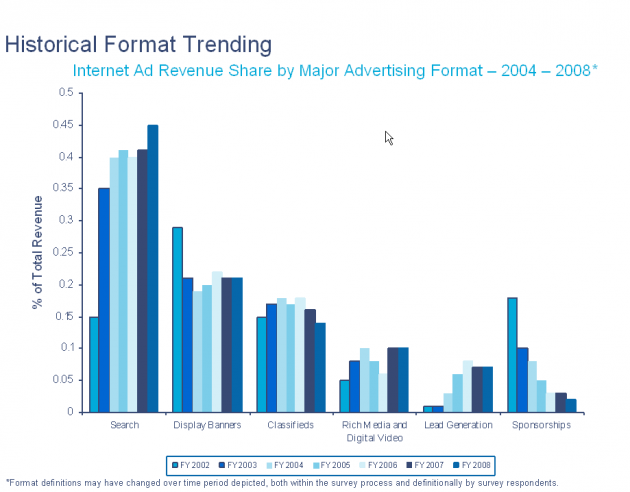
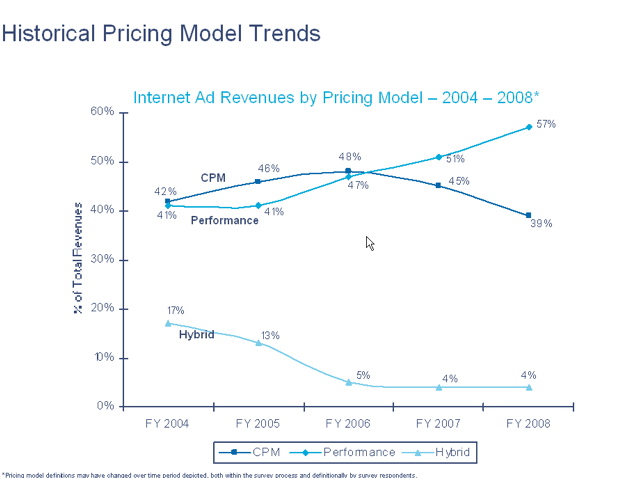
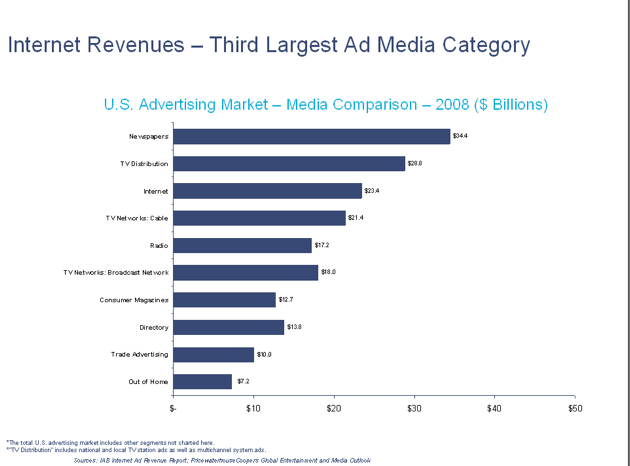
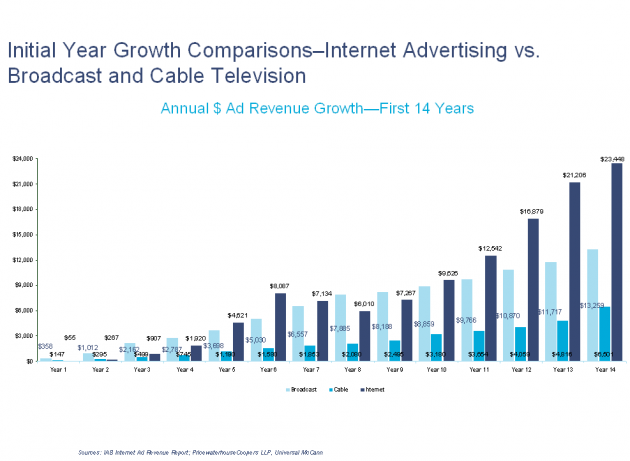
 - March 30th, 2009 at 9:10 am PDT
- March 30th, 2009 at 9:10 am PDT